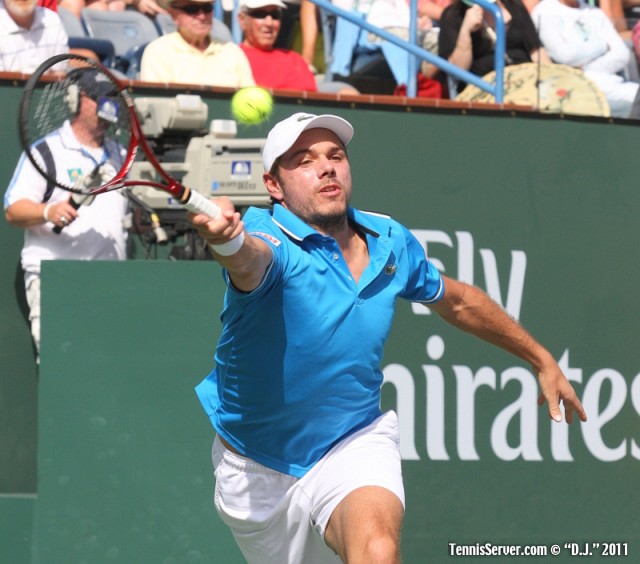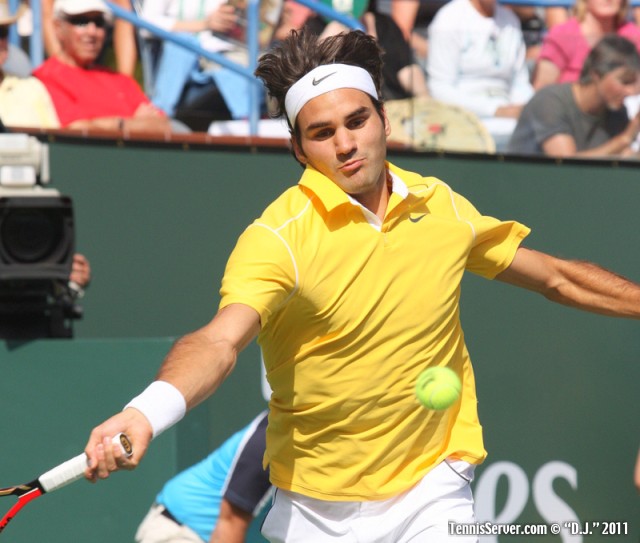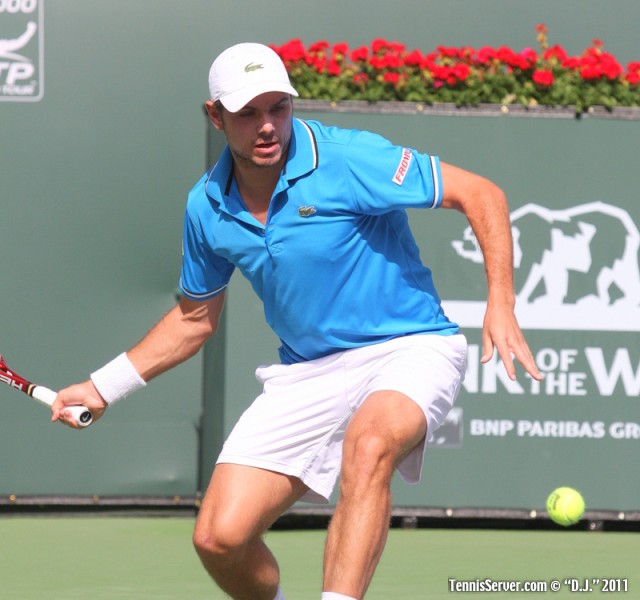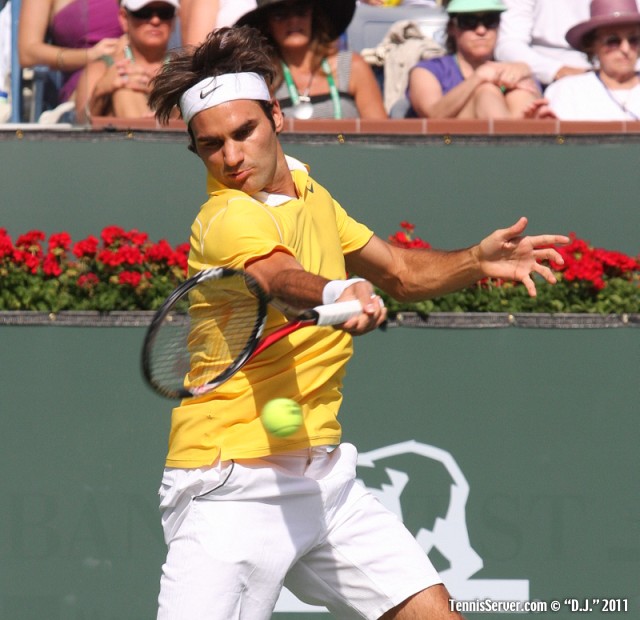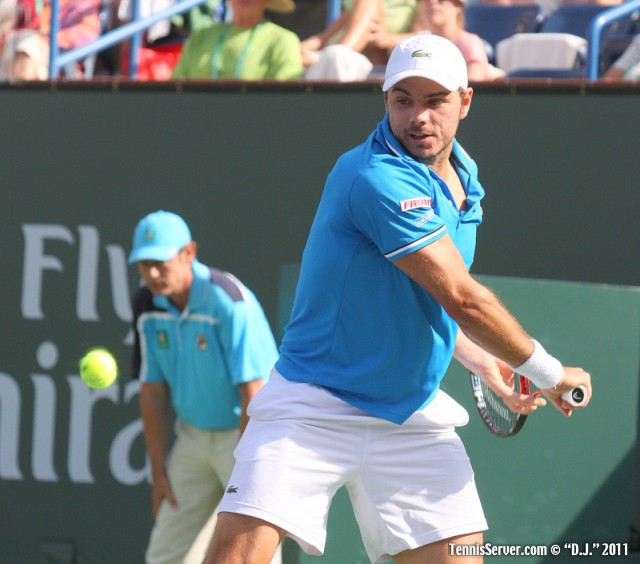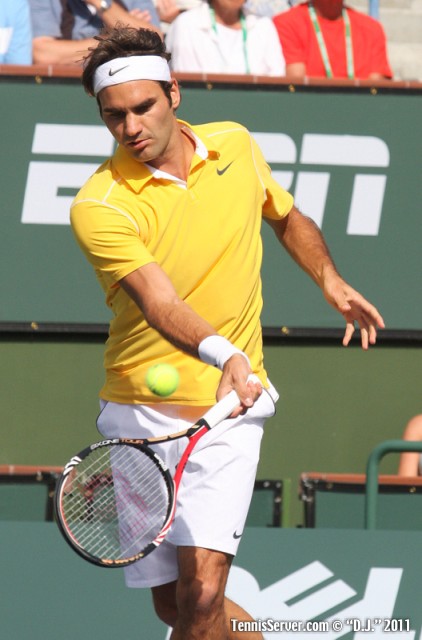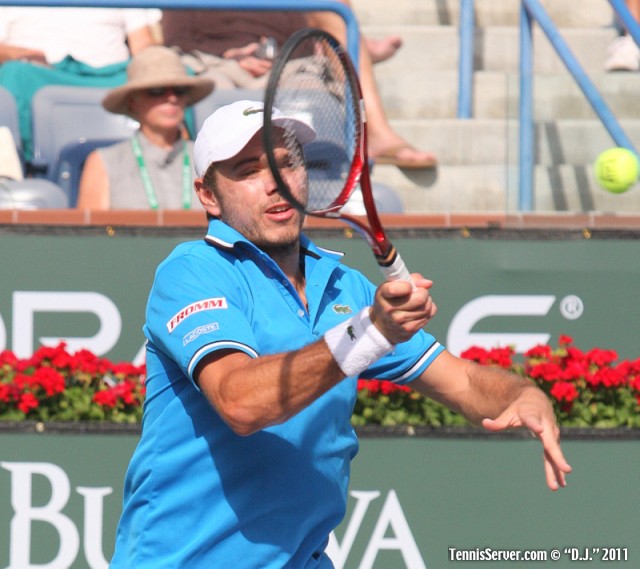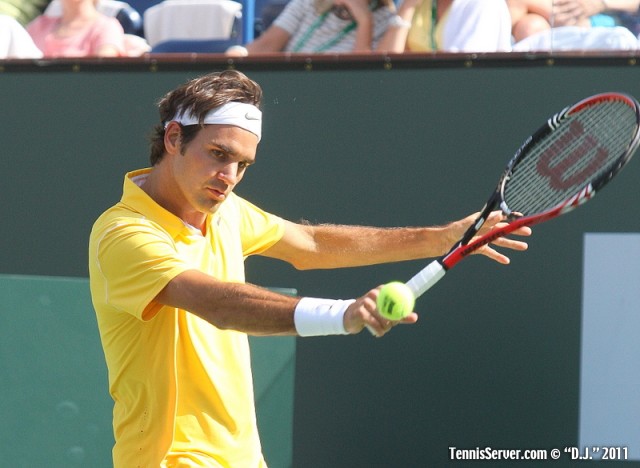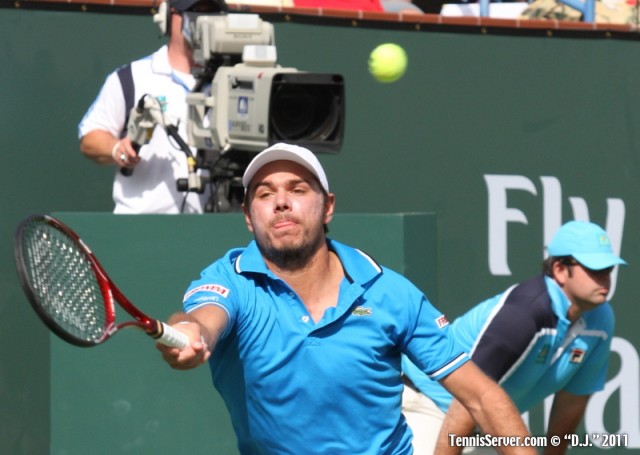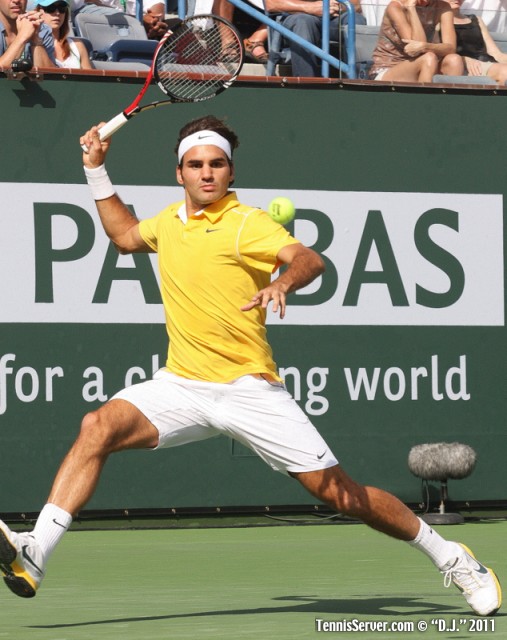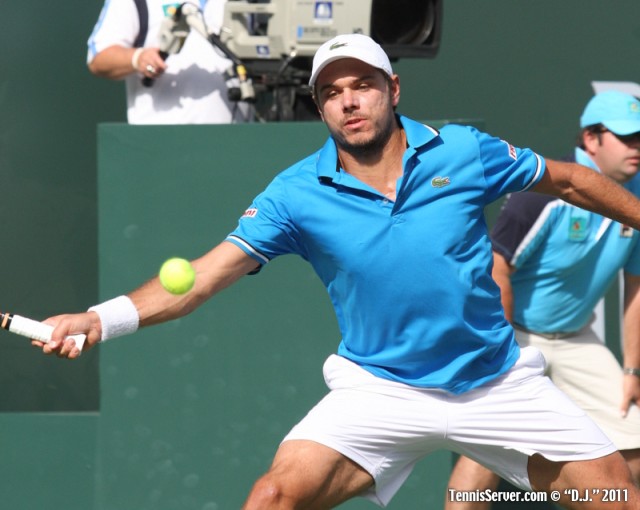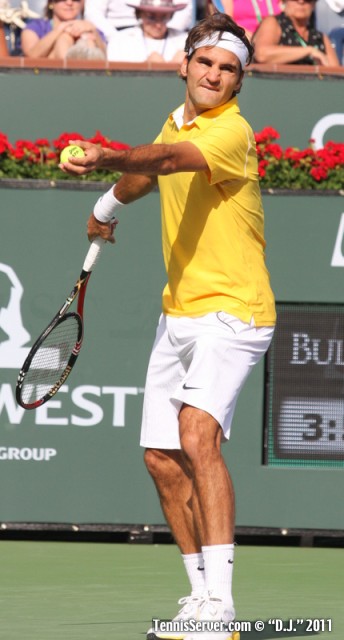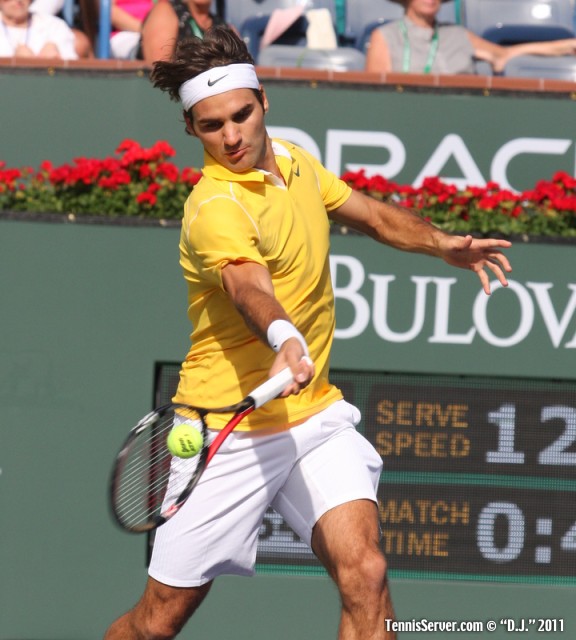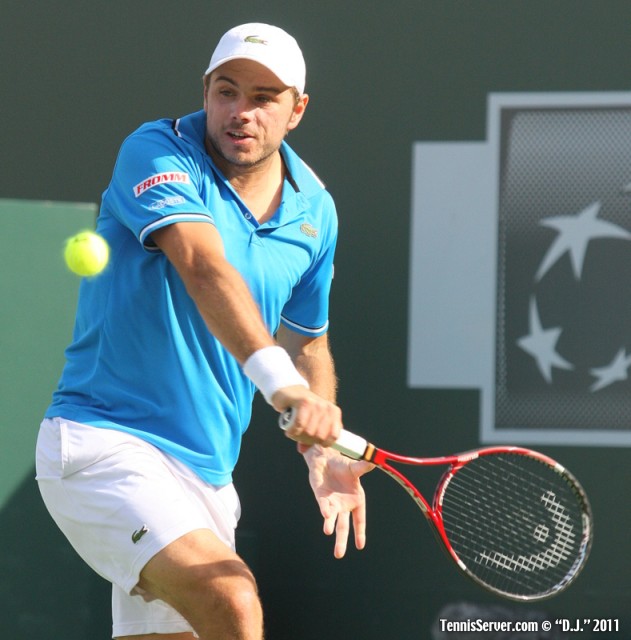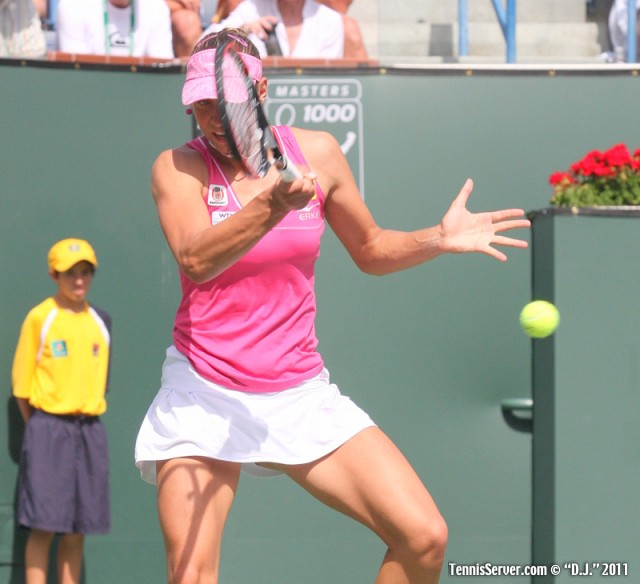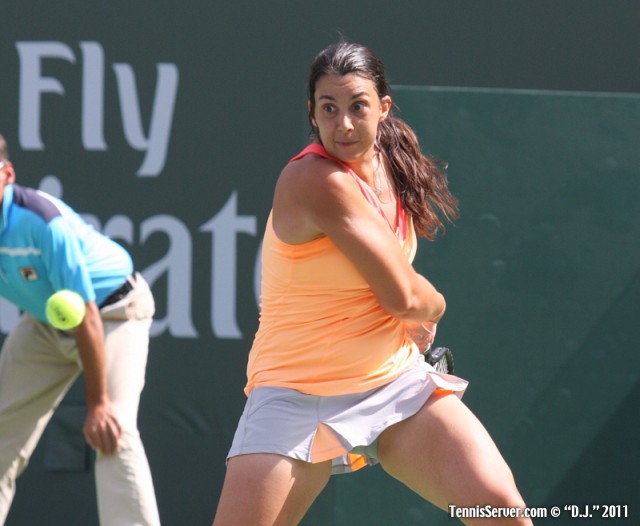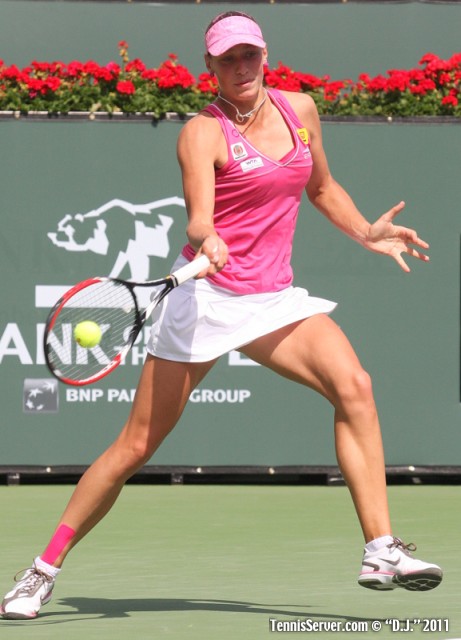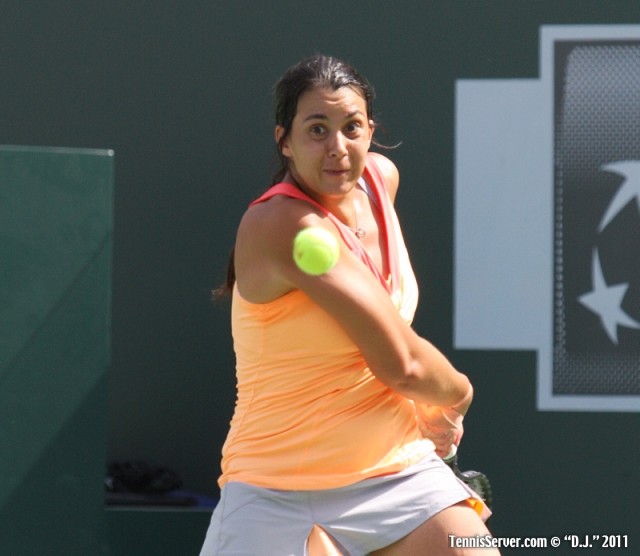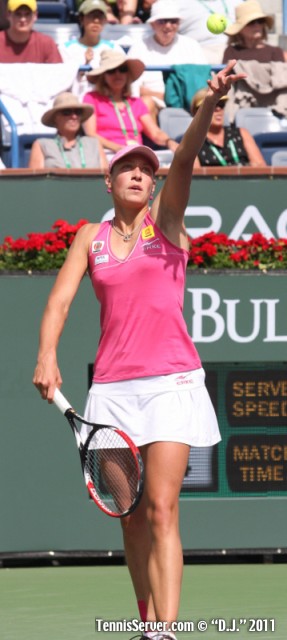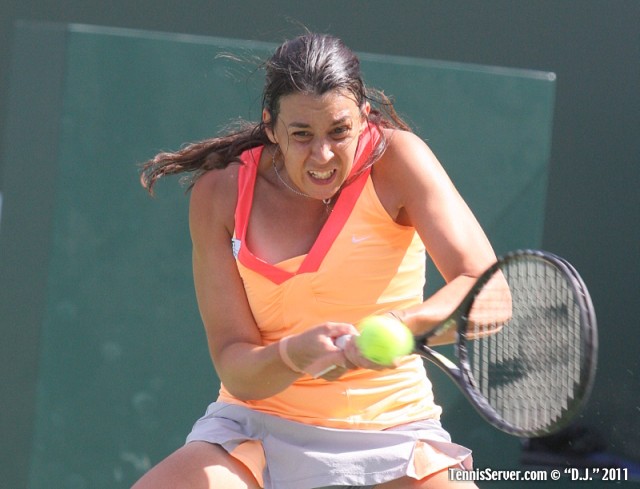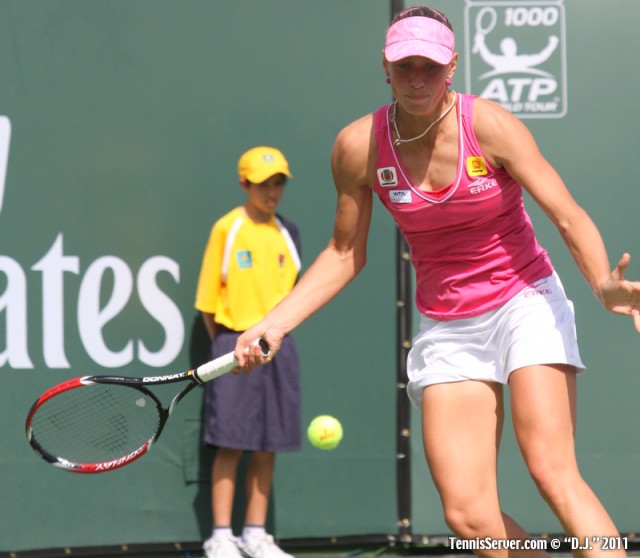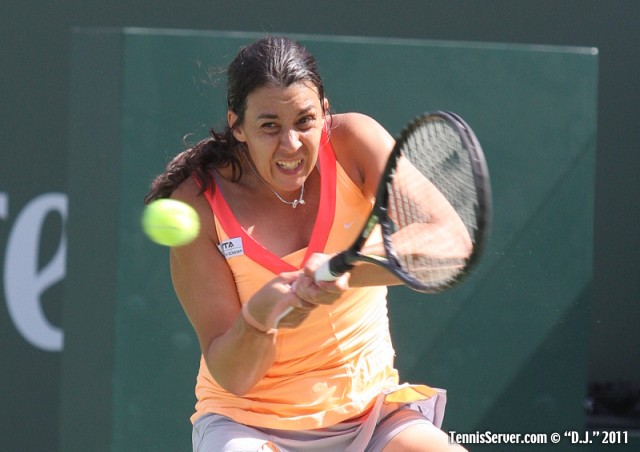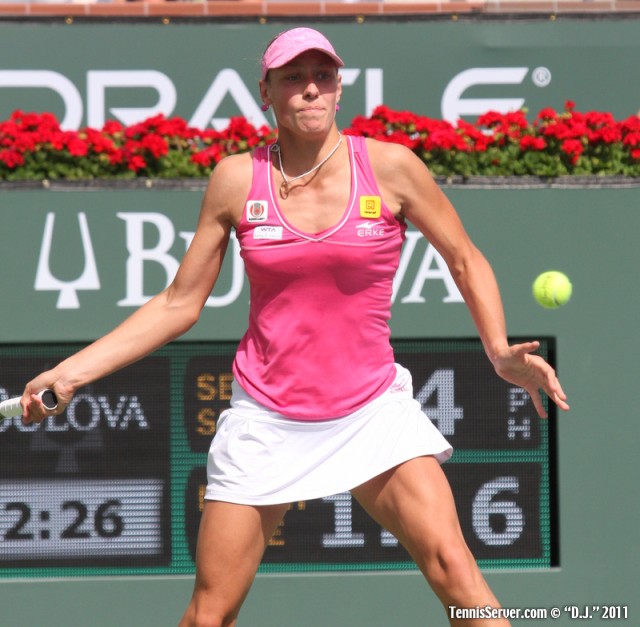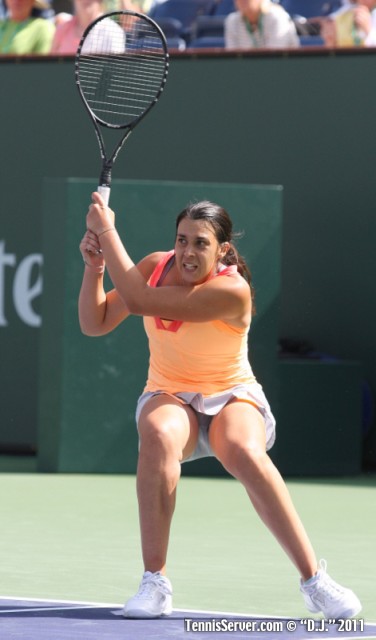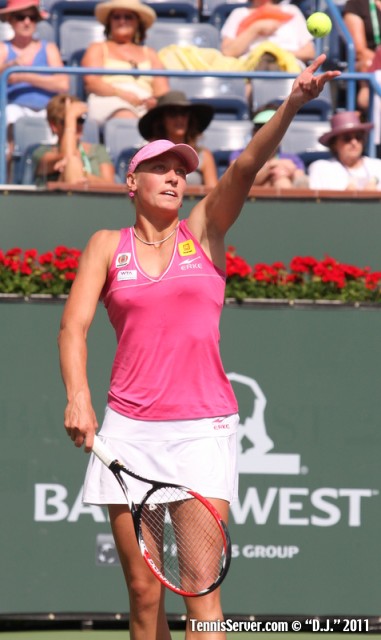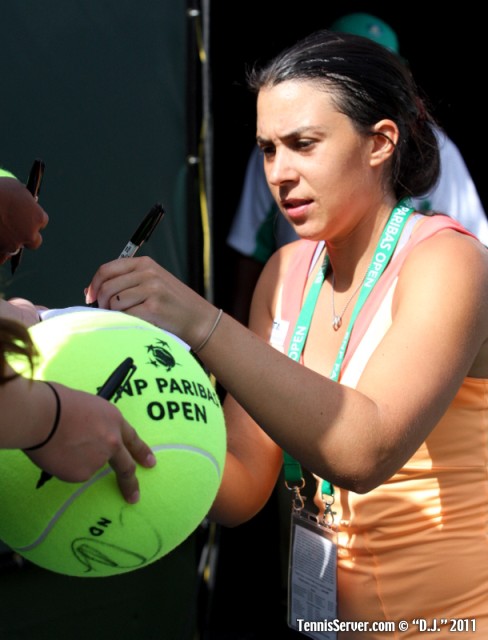|

 |
BNP Paribas Open 2011, Indian Wells, California, USA
March 18, 2011
Editorial by Vince Barr.
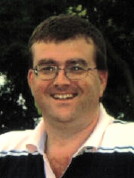
Vince Barr |
Maria's Meltdown / Swiss Tandem Slice Spaniards In Doubles
The second women's semifinal matched Caroline Wozniacki against Maria Sharapova; Maria came into the match with a 2-1 career head-to-head advantage. But you can toss that statistic out the proverbial window since Wozniacki won their last encounter at the 2010 U.S. Open in the Round of 16. You can bet your money that Maria has not forgotten that unpleasant encounter, losing it in straight sets. This time, Caroline started the match serving and it was highly competitive at the very start. The match featured several break point opportunities and multiple deuce counts. To add to the intrigue of the match, Sharapova is being coached by Thomas Hogstedt, who also coached Caroline. Pam Shriver, ABC & ESPN Tennis Analyst, said that she spoke with both camps prior to the match and Thomas thought that one key tactic for Maria would be to use her power and go after Wozniacki on penetrating volleys deep in the court. This attacking style of play would force Caroline off the offensive and put her on the defensive, reacting to the rally rather than dictating play as she is accustomed. The first two games took a total of about 15 minutes to play; Caroline started off serving first and was broken after several deuce counts and break point opportunities. Then, she returned the favor by breaking Maria in her first service game.
Sharapova was really dialed into the start of the match, committing 6 winners against three unforced errors. But things changed radically for Sharapova. By her second service game of the match, Maria had hit only one more additional winner against nine unforced errors. To me, this indicates that she is pressing a little bit, perhaps as a result of being broken and wanting to seize back the momentum she lost with her break of Caroline's serve. Maria hit a double fault to lose her second service game. At deuce in the fifth game of the match, ABC displayed a graphic that showed Sharapova had 27 unforced errors, the vast majority of which were on her forehand side (11). After going down 4-1 in the first set, Sharapova called for her coach on court. He continued to emphasize that she needed to stick with his game plan, going for her shots and putting the pressure on Wozniacki. If she made some errors, they could live with that. The important point was to stay on the offensive and make Wozniacki react from a defensive posture during match play rather than being able to impose her own will and play the style she wanted to play.
I know that the WTA has allowed on-court coaching for several years now but it is a rule that I wish would get rescinded. Here is a classic case why I don't like coaching: it detracts from the beauty of the game. Obviously, tennis is an individual sport, not a team one. Success or failure rests on your racquet; If you play poorly, you often lose and deservedly so. It is a harsh reality of the game, but everyone deals with the same pressure to perform or go home. Prior to each match, every player meets with their coach, perhaps the day before, to talk about strategy and tactics that the player will use against their opponent. They will talk about relative strengths and weaknesses as well as how their games match up against each other. I'm sure that they also do some kind of game planning with various scenarios highlighted: if you are a break down, do this. If the other player is struggling with their serve and / or volley, do some other thing. A player ought to be able to retain that information and apply that knowledge in the course of a given match. I have no problem with meeting with coaches during rain delays (something that is permissible even in the men's game) but not during the course of a match while it is in progress. Call me a traditionalist. The coaching question might be an academic one anyway as Caroline cruised to a 6-1 first set victory. Sharapova looked like she was just not on her game and possibly lacking a little bit of self-confidence.
Sharapova lost her first service game of the second set and it looked like this was going to be a very short night for the former world's top-ranked player. Everyone has off days on the court, amateur as well as professional. But you hate to see a player totally go away like this during such an important match (the semifinal of a Premier WTA Tour event). Maria finally got another break of Wozniacki's serve but if she continued to be unable to hold her own serve, it didn't matter. Caroline was focused on just getting the ball in play and allowing Maria to beat herself. This was an application of the old tennis paradigm: if your opponent is beating themselves, by all means, get out of their way and let them continue to do it! Caroline played well but, in my opinion, I think that Sharapova's excessive amount of unforced errors was the deciding factor in the match; late in the second set (the match was not technically over), ABC tennis analyst (and former touring pro) Cliff Drysdale said that Maria has "just played a dismal match with over 40 unforced errors." Caroline advances to play Mario Bartoli in the championship match on Sunday after beating Sharapova, 6-1, 6-2.
The results from the men's matches went according to what I expected. Novak Djokovic easily cruised past Richard Gasquet, 6-2, 6-4 and Roger Federer beat countryman (and doubles partner) Stanislas Wawrinka, 6-3, 6-4. Those results set up a very, very interesting men's semifinal between Federer and Djokovic on Saturday. Federer will be looking to redeem himself after Novak beat him in Australia earlier this year (as well as last year's U.S. Open) whereas Novak will be looking to continue a streak of solid play against Roger. Another subplot to this match is that it will be a battle for the No. 2 world ranking. As I said in an earlier column this week, if Djokovic plays longer in the tournament than does Federer, he will take the No. 2 ranking from Roger as only 165 points separated them in the rankings before play began this week at Indian Wells. Nadal will play Juan Martin Del Potro in the other (early) semifinal, starting at 11 am California time.
While the men's semifinals will wait until Saturday, the main event that everyone was looking forward to in Friday's night session was the rare doubles match between the top two ranked singles players. Federer played four doubles matches in 2010 and only two matches in 2009. Of course, he teamed with "Stan" (Wawrinka) to win the gold medal at the Beijing Olympics in 2008 and he will usually play doubles in any world group Davis Cup match that Switzerland is involved in. Nadal has played doubles with Marc Lopez (also a Spaniard) earlier this year when they teamed up together to win the doubles title at Doha, Qatar. He and Lopez are the defending champions at Indian Wells and actually played together in three separate tournaments last year. Scheduling has been cited as the main culprit as to why you don't see more top-ranked singles players playing in the doubles events. Top singles players set their schedule according to what preparation they think they need to be playing their best for the Grand Slams. The ATP has a rule that if a player is entered in both tournaments (singles and doubles), singles scheduling gets the priority. In other words, a doubles match will never be played before a singles match and the doubles event will be played only after "adequate rest" after the conclusion of the player's singles match.
This rule came into play last summer at the Western & Southern Financial Group Masters event in Cincinnati. Mardy Fish entered both tournaments and the way the draw worked out, he was set to play his quarterfinal match with Andy Murray, who was entered in the singles draw only. Murray wanted a later start because he was exhausted after playing so many consecutive matches in the high heat and humidity, but was turned down because Fish had to play doubles in the late afternoon. Murray was incensed and incorrectly thought that that singles should get the priority since that is what is typically shown on television. He had it half right: singles did have the priority, which was why his singles match with Fish had to be played at 11 am so that Fish would have enough rest time to play his doubles match in the afternoon. In any event, scheduling is one reason why so many top players don't play both events. In Saturday's doubles match with Federer, Nadal played at 7 pm and then has to turn around to play the 11 am singles semifinal with del Potro the next day. If Indian Wells had been followed by a grand slam event, like the U.S. Open (which follows the Cincy tournament), it would be highly unlikely for either Nadal or Federer to play in the doubles since they would not want to arrive in New York fatigued from playing too many sets of tennis leading up to a slam.
The Nadal / Federer doubles match was a closely-played contest and Nadal / Lopez lost the first set on an untimely double fault, 5-7. The Swiss duo looked like they played the points better, especially with their on-court movement. It also looked to me like the Spaniards were playing a very high risk / high reward type game, which is great if you are hitting your spots, but can be absolutely dangerous if your play is erratic in any aspect of your game. I didn't see the official stats after the match, but it also looked like both Nadal and Federer had way too many unforced errors, and it wasn't just in their service game. They had several mis-played volleys at the net, one of which led directly to the first break of the second set (and the deciding break as it turned out) at 2-4. Part of the reason for the unforced errors could be the simple fact that because Nadal and Lopez had not played extensively together (rather, it was more sporadic despite their tournament win in Doha a few weeks ago), they were not sure which person was getting to which balls. Team chemistry is a vital component in doubles play and it is one reason why the Bryan Brothers (or, prior to them, the legendary Woodies team) played so well together. That may be an unfair comparison because both of those teams played predominantly doubles with an occasional singles match thrown in. But I still think that a lack of team chemistry can make things a lot more difficult. Federer and Wawrinka won this match, 7-5, 6-3 and will next face Alexandr Dolgopolov and Xavier Malisse for the doubles championship on Saturday night.
[2] Roger Federer (SUI) {yellow shirt} d [12] Stanislas Wawrinka (SUI) 63 64
[15] Marion Bartoli (FRA) {orange shirt} d [23] Yanina Wickmayer (BEL) 61 63
Earlier Columns from this Event:
March 17, 2011 BNP Paribas Open: Quarterfinals: Sharapova, Peng, Nadal, Karlovic
March 16, 2011 BNP Paribas Open: Men's Round of 16 - del Potro, Kohlschreiber, Wawrinka, Berdych, Djokovic, Troicki
March 15, 2011 BNP Paribas Open: 4th Round - Federer, Chela, Djokovic, Gulbis, Clijsters, Bartoli, Roddick, Isner
March 14, 2011 BNP Paribas Open: 3rd Round - Nadal, Soderling, Sweeting, Kohlschreiber, Querrey, Verdasco
March 13, 2011 BNP Paribas Open: Raonic Rising, Roddick Rolling, Federer Florishing - Roddick, Blake, Djokovic, Golubev, Federer, Andreev
March 12, 2011 BNP Paribas Open: Women's Preview & Second Round Results - Nadal, de Voest, del Potro, Ljubicic, Wozniacki, Stephens
March 11, 2011 BNP Paribas Open: Men's Preview with Photo Coverage of Blake, Guccione, Ivanovic, Date-Krumm
  
Player Profile Index (Men) | Pro Tennis Showcase Archive | Player Profile Index (Women)
|
SUBSCRIBE TO THE TENNIS SERVER PHOTO FEED
|
All Tennis Server photography is copyrighted by the photographer and/or the Tennis Server, and all rights are reserved. You may not copy these images without permission. While you are welcome to create hyperlinks to Tennis Server web pages, you may not embed these images into other web pages or blogs without permission. To request permission, please use this contact form. Please be sure to clearly indicate exactly which photograph(s) you are requesting permission to use, as terms and conditions will vary depending on the photographer and the photograph.
|
 |
|

|





 You will join 13,000 other subscribers in receiving news of updates to the Tennis Server along with monthly tennis tips from tennis pro Tom Veneziano.
You will join 13,000 other subscribers in receiving news of updates to the Tennis Server along with monthly tennis tips from tennis pro Tom Veneziano. 
